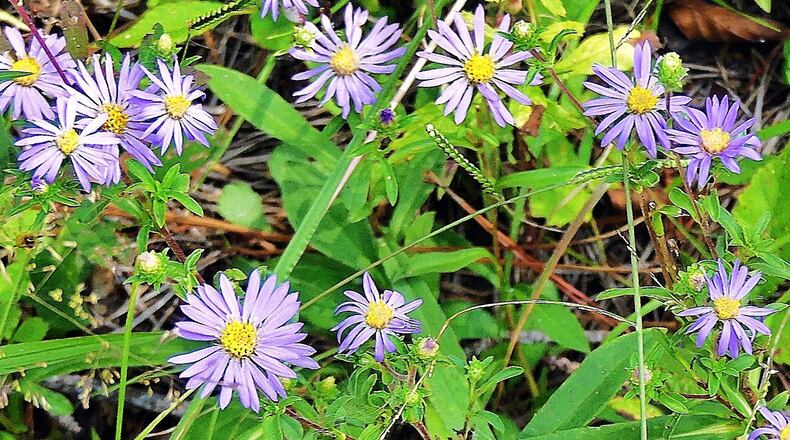It might sneak by you, but autumn officially arrives at 9:54 p.m. today — the autumnal equinox. Sunday will be the first full day of the season.
Fall’s more visible signs are everywhere now: Goldenrods, asters and other fall wildflowers are in full bloom. Meadows sport a purple tint from blooming Joe-Pye weed and ironweed. Acorns, wild grapes, berries, hickory nuts and other wild bounty are ripe. Fall leaf color already is appearing in some trees — sumac, sourwood, serviceberry, dogwood.
The first unmistakable sign of fall, though, came in early September: The light began changing, perhaps so subtly that you hardly noticed it. As autumn approaches each year, the sun no longer climbs as high in the sky each day as it did in summer, when it was directly overhead. Sunbeams start coming in at a slant. The daytime world becomes bathed in golden light, and the sky appears bluer.
I once asked a scientist if the skies really are bluer in autumn, and she said that indeed they are. It’s due mostly to a phenomenon known as “Rayleigh scattering,” named after a British physicist. It refers to the scattering of sunlight off molecules in the atmosphere.
The scattering is most effective at short wavelengths, which is the blue end of the visible light spectrum. It makes the sky blue all year. But in autumn, when the sun is no longer directly overhead and more of the sky is angled away from the sun, the Rayleigh effect beams more blue light toward our eyes and at the same time decreases incoming levels of red and green. Also, there is less humidity in the fall, which gives us a clearer, crisper sky.
So, the sky does appear bluer in autumn. And then I feel what 19th-century novelist Nathaniel Hawthorne must have felt when he wrote: “I cannot endure to waste anything as precious as autumn sunshine by staying in the house.”
IN THE SKY: The moon will be full on Monday — the Harvest Moon, the full moon nearest the autumnal equinox. Elsewhere in the sky, said David Dundee, Tellus Science Museum astronomer, brilliant Venus is very low in the southwest just after dark and sets two hours later. Mars, also shining brightly, is in the southeast at dusk. Jupiter and Saturn (low) are in the southwest as the sky darkens.
About the Author
Keep Reading
The Latest
Featured


